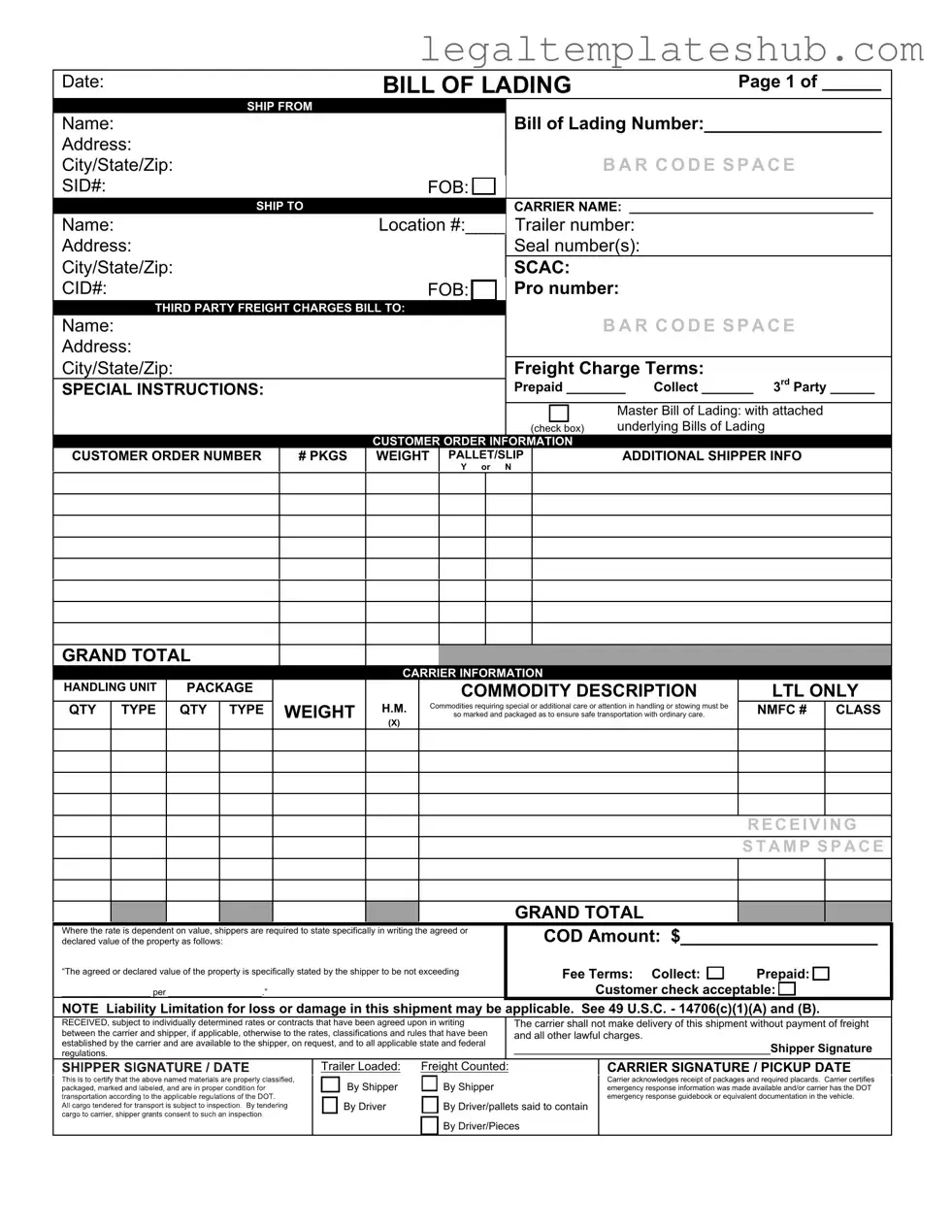Blank Bill of Lading with a Supplement PDF Form
A Bill of Lading with a Supplement form is a crucial document in the shipping industry that serves as a receipt for goods and outlines the terms of transportation. It provides essential details about the shipment, including the type, quantity, and destination of the goods. Understanding how to properly fill out this form is vital for ensuring smooth logistics and compliance.
To get started on your shipping process, please fill out the form by clicking the button below.
Access Editor
